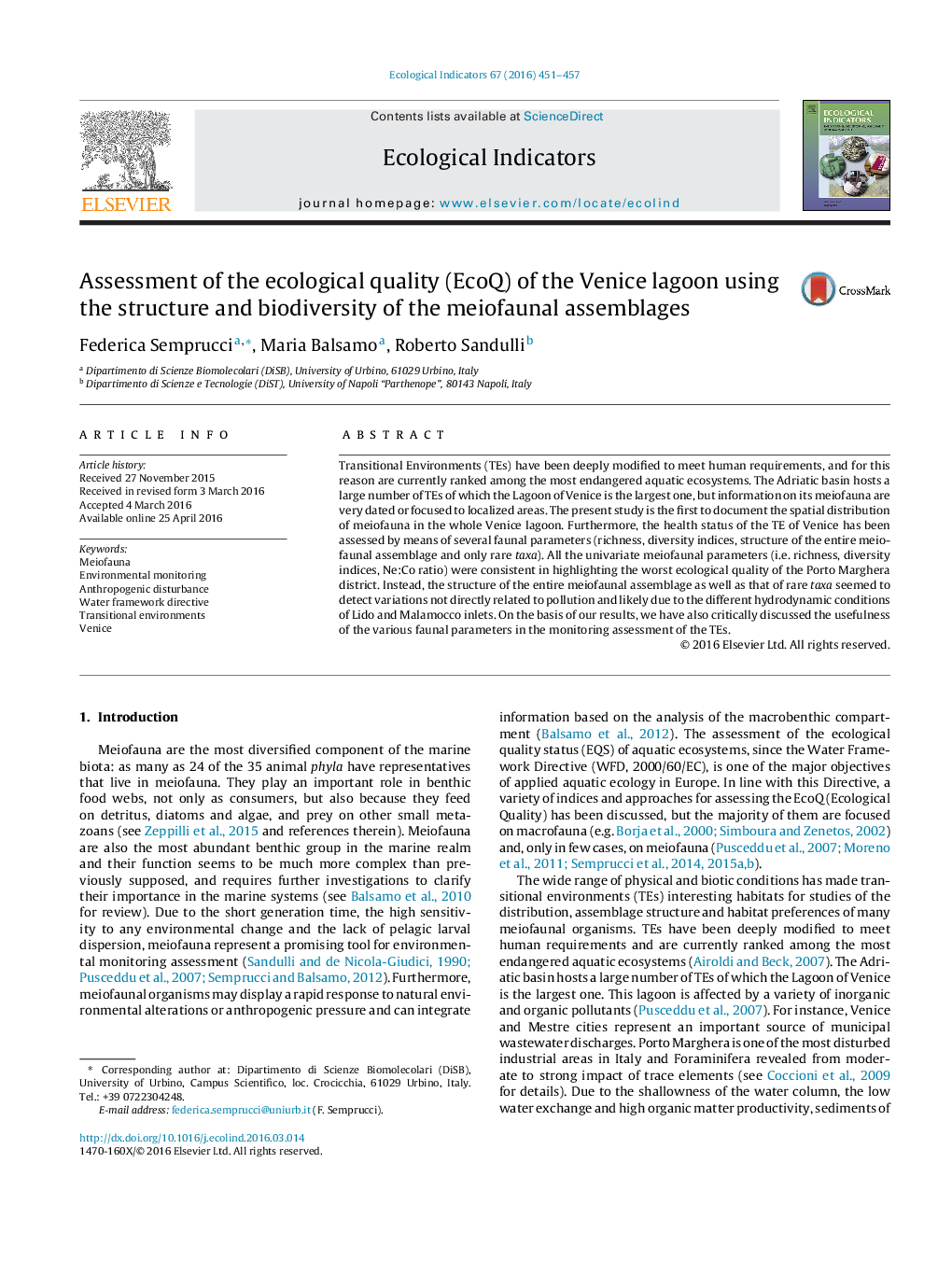| کد مقاله | کد نشریه | سال انتشار | مقاله انگلیسی | نسخه تمام متن |
|---|---|---|---|---|
| 4372891 | 1617135 | 2016 | 7 صفحه PDF | دانلود رایگان |
• The EcoQ in the TE of Venice ranged from bad to moderate.
• Richness, diversity, Ne:Co ratio were the best meiofaunal descriptors.
• Structure of the meiofaunal assemblage seemed not to discriminate the pollution gradient.
• Porto Marghera zone showed the lowest EcoQ in the TE of Venice.
Transitional Environments (TEs) have been deeply modified to meet human requirements, and for this reason are currently ranked among the most endangered aquatic ecosystems. The Adriatic basin hosts a large number of TEs of which the Lagoon of Venice is the largest one, but information on its meiofauna are very dated or focused to localized areas. The present study is the first to document the spatial distribution of meiofauna in the whole Venice lagoon. Furthermore, the health status of the TE of Venice has been assessed by means of several faunal parameters (richness, diversity indices, structure of the entire meiofaunal assemblage and only rare taxa). All the univariate meiofaunal parameters (i.e. richness, diversity indices, Ne:Co ratio) were consistent in highlighting the worst ecological quality of the Porto Marghera district. Instead, the structure of the entire meiofaunal assemblage as well as that of rare taxa seemed to detect variations not directly related to pollution and likely due to the different hydrodynamic conditions of Lido and Malamocco inlets. On the basis of our results, we have also critically discussed the usefulness of the various faunal parameters in the monitoring assessment of the TEs.
Journal: Ecological Indicators - Volume 67, August 2016, Pages 451–457
